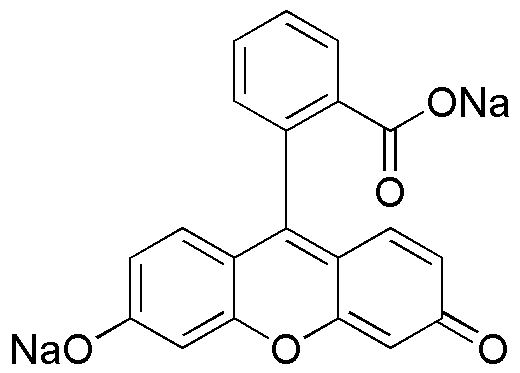Fluorescein sodium is widely utilized in research focused on:
- Biomedical Imaging: It serves as a fluorescent dye in various imaging techniques, allowing researchers to visualize biological structures and processes in real-time.
- Fluorescence Microscopy: Commonly used in laboratories, it enhances the contrast of samples, making it easier to study cellular components and interactions under a microscope.
- Environmental Monitoring: Employed as a tracer in hydrology studies to track water flow and contamination, providing critical data for environmental assessments.
- Diagnostic Applications: Utilized in medical diagnostics, particularly in ophthalmology for eye examinations, helping to detect corneal abrasions and other eye conditions.
- Research and Development: In the field of materials science, it is used to develop new fluorescent materials, contributing to advancements in sensors and display technologies.
General Information
Properties
Safety and Regulations
Applications
Fluorescein sodium is widely utilized in research focused on:
- Biomedical Imaging: It serves as a fluorescent dye in various imaging techniques, allowing researchers to visualize biological structures and processes in real-time.
- Fluorescence Microscopy: Commonly used in laboratories, it enhances the contrast of samples, making it easier to study cellular components and interactions under a microscope.
- Environmental Monitoring: Employed as a tracer in hydrology studies to track water flow and contamination, providing critical data for environmental assessments.
- Diagnostic Applications: Utilized in medical diagnostics, particularly in ophthalmology for eye examinations, helping to detect corneal abrasions and other eye conditions.
- Research and Development: In the field of materials science, it is used to develop new fluorescent materials, contributing to advancements in sensors and display technologies.
Documents
Safety Data Sheets (SDS)
The SDS provides comprehensive safety information on handling, storage, and disposal of the product.
Product Specification (PS)
The PS provides a comprehensive breakdown of the product’s properties, including chemical composition, physical state, purity, and storage requirements. It also details acceptable quality ranges and the product's intended applications.
Certificates of Analysis (COA)
Search for Certificates of Analysis (COA) by entering the products Lot Number. Lot and Batch Numbers can be found on a product’s label following the words ‘Lot’ or ‘Batch’.
*Catalog Number
*Lot Number
Certificates Of Origin (COO)
This COO confirms the country where the product was manufactured, and also details the materials and components used in it and whether it is derived from natural, synthetic, or other specific sources. This certificate may be required for customs, trade, and regulatory compliance.
*Catalog Number
*Lot Number
Safety Data Sheets (SDS)
The SDS provides comprehensive safety information on handling, storage, and disposal of the product.
DownloadProduct Specification (PS)
The PS provides a comprehensive breakdown of the product’s properties, including chemical composition, physical state, purity, and storage requirements. It also details acceptable quality ranges and the product's intended applications.
DownloadCertificates of Analysis (COA)
Search for Certificates of Analysis (COA) by entering the products Lot Number. Lot and Batch Numbers can be found on a product’s label following the words ‘Lot’ or ‘Batch’.
*Catalog Number
*Lot Number
Certificates Of Origin (COO)
This COO confirms the country where the product was manufactured, and also details the materials and components used in it and whether it is derived from natural, synthetic, or other specific sources. This certificate may be required for customs, trade, and regulatory compliance.


